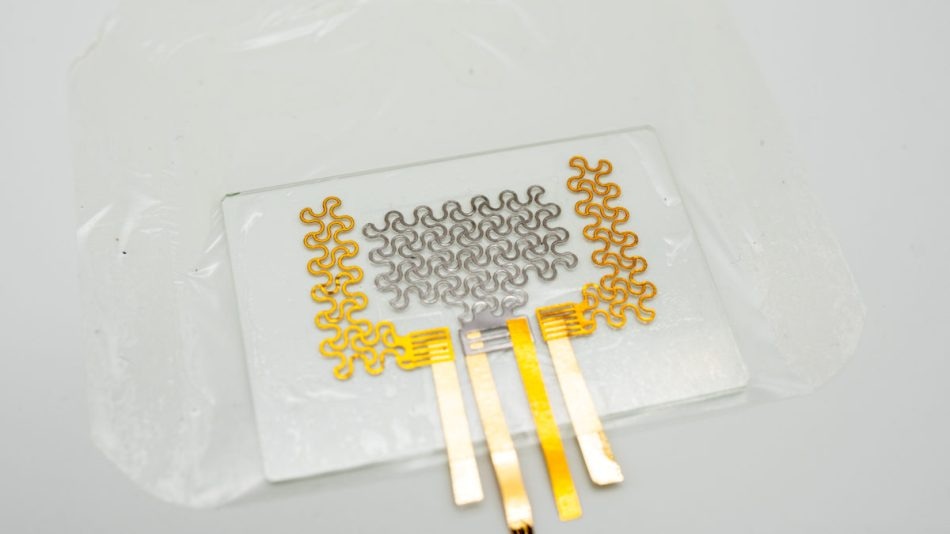Jun 21 2019
According to the National Center for Health Statistics, heart disease is the most leading cause of death in Texas and is responsible for over 45,000 deaths statewide in 2017.
 (Image credit: The University of Texas)
(Image credit: The University of Texas)
A novel wearable device produced from a material that can be stretched and is lightweight makes heart health monitoring potentially easier and more precise compared to the current electrocardiograph machines—a technology that has not changed much in nearly 10 years.
Engineers from The University of Texas at Austin, under the guidance of Nanshu Lu in the Cockrell School of Engineering, designed a graphene-based wearable device, which is a modern incarnation of Lu’s electronic tattoo technology and can be mounted on the skin to measure various body responses, from electrical to biomechanical signals.
The researchers have reported the results of their cutting-edge e-tattoo in a recent issue of Advanced Science.
The device can be placed on the heart for prolonged periods with little to no discomfort, as it is very lightweight and stretchable. Using this device, cardiac health can be measured in two ways—that is, electrocardiograph and seismocardiograph readings can be taken at the same time.
It is known that electrocardiogram (ECG) is a method that measures the rates of electrical activity generated whenever the heart beats. Seismocardiography (SCG) is a measurement method that uses chest vibrations related to heartbeats. The e-tattoo is the first ultrathin and stretchable device to measure SCG and ECG and can be charged remotely by a smartphone.
We can get much greater insight into heart health by the synchronous collection of data from both sources.
Nanshu Lu, Associate Professor, Departments of Aerospace Engineering and Engineering Mechanics and Biomedical Engineering, Cockrell School of Engineering, The University of Texas at Austin
Although the measurements from ECG alone are not satisfactorily precise to determine heart health, they provide extra information in tandem with SCG signal recordings. The SCG reveals the precision of the ECG measurements, similar to a form of quality control.
Despite the fact that soft e-tattoos have previously been used for ECG recording, other sensors, like the SCG sensor, are still produced from nonstretchable materials, making them large and difficult to wear. The e-tattoo developed by Lu and her colleagues consists of a piezoelectric polymer known as polyvinylidene fluoride, which has the potential to produce its own electric charge when subject to mechanical stress. The device integrated with the 3D digital image correlation technology records the chest vibrations to find the best location for placing the e-tattoo on the chest.
In general, an ECG measurement is done in a doctor’s office to monitor heart health only for a few minutes. However, the e-tattoo can be worn for days and can provide continuous heart monitoring, which is another benefit over conventional methods.
Lu and her research team are already involved in improving the device for data collection and storage, in addition to methods to operate the e-tattoo wirelessly for prolonged periods. Recently, they designed a smartphone app that can store the data safely and display a heart beating on the screen in real time.
Lu’s team includes faculty members and students covering various engineering disciplines—biomedical engineering, aerospace engineering and engineering mechanics, electrical and computer engineering, mechanical engineering, and materials science and engineering, along with a collaborator from UT Southwestern Medical School. Moreover, four members of the UT Austin team were undergraduate students when the study was carried out.
The work was financially supported by the Office of Naval Research, the Air Force Office of Scientific Research, the National Science Foundation, and the National Institutes of Health.